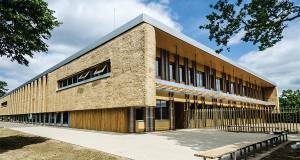
- Ventilation
- Posted
Poor ventilation a Covid risk in 40 per cent of classrooms, study finds
Coventry University research has found that 40 per cent of primary school classrooms examined in a study did not have an adequate ventilation rate to combat the spread of Covid-19.
The research found this was largely due teachers and pupils failing to open doors and windows regularly enough. It found this is linked to the different thresholds for temperature between adults and children – with adults essentially feeling colder than children. The research was spread across two papers in the journal Building and Environment.
Coventry University PhD student Sepideh Korsavi, under the supervision of Dr Azadeh Montazami, observed occupant-related factors of 805 children in 32 naturally ventilated classrooms in UK primary schools during cold and warm seasons, and found that 40 per cent of classrooms failed to provide an adequate ventilation rate.
The results suggest that a classroom with high potential for natural ventilation does not necessarily provide adequate indoor air quality, as it relies on teachers and pupils opening windows and doors.
Factors affecting ventilation rates fall into contextual, occupant and building elements, and the research highlights the importance of the occupant factor in maintaining acceptable ventilation rates.
The study also shows that around 15 per cent of children are overheated during cold seasons as well as warm seasons, and recommends increasing ventilation rates to help maintain air quality and a comfortable room temperature.
Dr Azadeh Montazami, an indoor environmental quality expert at Coventry University and supervisor of the research project, said: “Teachers are mainly in charge of controlling the environment in classrooms and they open windows according to their own thermal threshold, which is higher than children’s. As most UK school classrooms are naturally ventilated, teachers should be informed about these differences and the consequence of their behaviour and be encouraged to open windows to reduce the risk of spreading Covid.”
Dr Sepideh Korsavi, who is now a postdoctoral researcher in sustainable buildings at the University of Plymouth, said: “The area and volume of the classrooms need to be increased to occupy students with an acceptable distance. User-friendly and safe windows that are designed at two different levels for the height of both teachers and children can facilitate their window operations. Well-designed naturally ventilated schools that are operated effectively by school occupants can increase ventilation rates and reduce the risk of spreading Covid. ”
The recommendation supports recent guidance by the Chartered Institution of Building Services Engineers (CIBSE) that good ventilation is essential to reduce occupants' exposure to airborne pathogens, including Covid-19, in buildings.
Professor Dejan Mumovi of University College London also contributed to the study.
- covid19
- pandemic
- Ventilation
- Schools
- education
- classrooms
- indoor air quality
- Ireland
- UK
- Irish news
- UK news
Related items
-
 King of the castle
King of the castle -
 Energy poverty and electric heating
Energy poverty and electric heating -
 New Ejot profile cuts thermal bridging losses by 25mm insulation equivalent
New Ejot profile cuts thermal bridging losses by 25mm insulation equivalent -
 Build Homes Better updates Isoquick certification to tackle brick support challenge
Build Homes Better updates Isoquick certification to tackle brick support challenge -
 #BuildingLife Series: Director at CORA Consulting Engineers, John Casey
#BuildingLife Series: Director at CORA Consulting Engineers, John Casey -
 September’s AECB environmental construction conference seeks to spark debate among industry experts
September’s AECB environmental construction conference seeks to spark debate among industry experts

